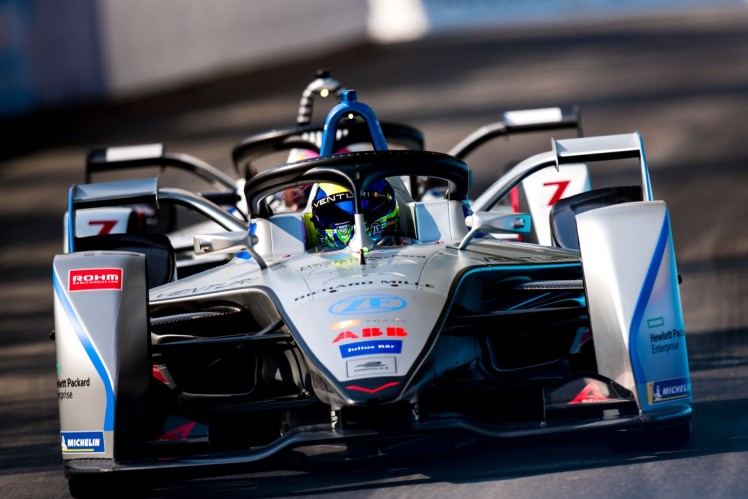ZF knows from its history in motorsports, which reaches back to the 1930s, how important it is to have enthusiasm for motorsports during product development or modification. Extremely short-term development periods and rigid regulations are special challenges. Providing a product that affords the respective team an advantage brings an even greater feeling of success. It is even better when the experience gained can be used later for series products – and then the 'racing approved' benefits can be used in vehicles to the advantage of us all.

Technology
#Emobility
ZF and Formula E: A Win-Win Situation
Min Reading Time
Electric drives help Formula E drivers achieve the highest rankings. The technology can also give Series E vehicles greater mileage.
On the Winners’ Podium at the Formula E
ZF has once again pulled off a win-win situation. The Group developed the e-drive with a maximum performance of 250 kW for the race cars of the Monaco-based Venturi team. The e-drive has been in use since the start of the current 2018/2019 season, and Venturi driver Edoardo Mortara clinched the first-ever Formula E victory with it during the race in Hong Kong at the beginning of March 2019.
“The development phase was extremely dynamic”, says Tobias Hofmann, project manager for the Formula E drive at ZF. With numerous variables, short-term modifications, and various design phases, it was fundamentally different from a series project. “Key drive requirements came at later stages – for example the 'attack mode' that gives the driver at times a 25-kW boost for overtaking maneuvers“, recalls Hofmann.
However, the general objective was fairly clear: maximum energy efficiency. Every second of voltage counts since Formula E regulations prohibit swapping vehicles in the middle of the race since the 2019 season. The race cars have to make due with a single battery charge. As usual, maximum weight reduction and a high degree of stability were also of utmost importance. Nevertheless, the drive components of the Formula E must withstand 13 races per season with a total of over 5,000 racing and qualifying kilometers. The teams can only swap the drive components in each car once because additional swaps would result in drastic time penalties.

On the city circuits the technology of the vehicles is brought to the limit.
System Approach: A Solution for the Race Cars and Impetus for Series Vehicles
In order to reach all these goals simultaneously, ZF used its strengths in system competence: “We combined materials knowledge, experience in gearing technology, and the newest trends for power electronics. This allowed us to develop an optimal total package”, says Hofmann. The result is an e-drive with extremely low weight and very high efficiency. Among the numerous new paths followed by the ZF team, the use of silicon carbide for power electronics proved to be particularly promising. Silicon-carbide chipsets can be designed 10 times thinner than current silicon types, so there is a lower internal resistance. The results are increased efficiency and range. Alternatively, smaller batteries would be possible with the same range, which could save weight and overall costs.
“We will also be able to use the experience we gained from developing the e-drive for motorsports for series projects.”
It is precisely this that is of interest outside the racetrack when it comes to slower e-mobility. ZF is therefore planning to soon offer power electronics with silicon carbide for series vehicles. ZF will transfer its Formula E experience and data directly into further development of this new technology. A new winding procedure for the e-machines is also among the concepts that the Group developed specially for racing applications, and which they will also pursue in series applications. The development of the electric motorsport drive has even had a positive effect on the test benches. Since the racing drive comes very close to the ideal 100 percent efficiency, the test bench also had to satisfy strict requirements for measurement accuracy. This now also benefits the testing of ZF pre-series projects.
One of the most valuable experiences for Hofmann is the “mind-set” gained from motorsport development in terms of overcoming boundaries in a pinch and following new paths. “That will help us when it comes to future series projects,” says Hofmann. However, system development with a myriad of open parameters is also evident among so-called new automotive customers, for example manufacturers of electric minibuses and vans. ZF engineers‘ enthusiasm for sports will give ZF a competitive advantage.
During race season, an e-drive must withstand a peak load of
5000
kilometers
during racing and qualifying in the Formula E without breakdowns.








